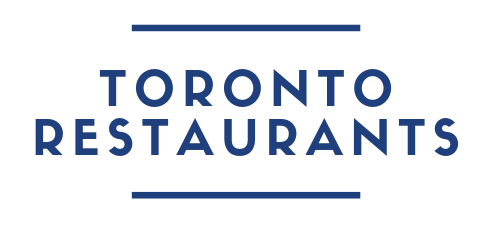Konjiki Ramen – First Overseas Location Opens in North York
Chef Atsushi Yamamoto has been running Konjiki Hototogisu, his eight-seat noodle house in Shibuya Tokyo since 2006.
His ramen, created from an authentic recipe and made with modern ingredients, has long garnered praise and awards in print and online. But what’s most impressive is the Michelin Bib Gourmand designation from 2015 up to and including 2018.**
More than just a mere bowl of soup, it’s a work of painstaking art from noodles to soup base from a chef who refuses to accept any standard short of perfection and whose passion for ramen is illustrated in every bowl.
Chef Yamamoto has softly opened his first overseas location, Konjiki Ramen, in North York.
Here’s a closer look:
Yamamoto-san
Chef Yamamoto is in Toronto until mid-January to ensure that his famous ramen is as close to the Tokyo version as possible. He’s shipped high-end stainless steel ramen noodle machines and imported his own soya sauce, a secret recipe made for him by a factory in Japan.
He’s working with local suppliers for pork, produce and other ingredients such as Canadian flour, which he mixes with flour from Japan for his toothsome noodles.
Yamamoto has high standards for every ingredient that goes into each bowl. Consistency too – it must taste the same at lunch hour as the last order of the day.
Soup base
Each soup begins with water filtered through a special machine imported from Japan. This ensures a good quality base.
While others use concentrate and dried clams for their ramen base, Yamamoto insists on using real cherrystone clams, a pricey ingredient, especially here in Canada.
Mixed in with oysters, chicken and pork, it creates a rich clam flavour, deep with umami. Also quite different from most ramen – the clear hue of the soup.
Other bases include pork bone and a creamy vegetarian broth made with mashed potatoes and soy milk.
Noodles
In a central kitchen in Scarborough, two machines work to create perfect ramen noodles. The first mixes white and wheat (for added texture and taste) flours with other dry ingredients, then follows with the wet. The second machine produces a large sheet of flour, each one weighing and portioned the same.
Noodles are cut between thin and thick in diameter and to absorb the soup. At Konjiki Hototogisu in Japan, the noodles are just slightly thicker. Cooked to al dente, the noodles soften by the time you reach the bottom of the bowl.
Other components
Yamamoto uses less chashu (pork) than most ramen houses here, wanting you to focus on the broth and noodles. And instead of pork belly (though it’s available separately on the menu), lean pork loin is the meat of choice, sous vide for four hours to ensure it remains tender and juicy, then sliced thinly.
And while many typical Japanese ramen ingredients appear, corn, tofu, yam, more modern, “western” elements include porcini mushroom paste, chopped basil, beets and baby spinach.
The method
There’s a proper way to eat this ramen. Gently wave your hand over the bowl to feel the warmth. Take a deep breath to take in the aroma. Try a spoonful of just soup alone. This fills your mouth with the complex, deep flavours. Then enjoy noodles, soup and ingredients all at once. Slurping is encouraged, as this is an expression of satisfaction, and you may also drink the last of the soup directly from the bowl.
On the menu
The soft opening features six different ramen and sides, though this will expand in the new year. Exclusive to Toronto are Smoky Black Tonkotsu Ramen ($13), Spicy Red Tonkotsu Ramen ($13) with marinated pork and mixed spice chili oil, and Vegetarian Ramen ($14). Drinks include pop, water, Japanese tea, and Asahi beer on tap. In the works: sake.
Setting
A Japanese design company kept similar tones to the Shibuya noodle house – lots of dark elements including tables, chairs, ceiling, light fixtures and deep iron shelving. Seating was kept close too, to keep the atmosphere authentic.
Saryo Café, located inside Konjiki Ramen, is a Tokyo dessert and café chain, decorated in traditional Japanese style of light wood – a sharp contrast to the ramen shop. Offering cheesecakes, feature cakes, mocha, soft serve ice creams and hot and cold teas, and lattes, Saryo’s known for their matcha (green tea) and hojicha (rose tea) flavoured desserts. Located adjacent to the Konjiki dining room, it’s practically impossible to not stay for a post-meal treat.
The real deal
The restaurant opens at 11:30 am, but the lineups of 40 to 50 people begin before 11 am. There’s no other ramen like it in the city, and many who have traveled to Japan say it’s the closest thing outside of Tokyo.
Go see for yourself. Just be sure to get there early.
**Bib Gourmand restaurants are “selected by Michelin’s famously anonymous food inspectors, who choose restaurants serving high quality food on their menus and make it possible to order two courses and a glass of wine or dessert for $40 or less (tax and gratuity not included).” – Michelin
____
Konjiki Ramen (5051 Yonge St.) accommodates 40 guests for lunch and dinner.
Saryo Tokyo Café & Dessert (located inside Konjiki Ramen) seats 12 guests. Takeout is also available.
For breaking news, updates, interviews + much more, follow Toronto Restaurants on Instagram and Facebook and subscribe to the newsletter.

